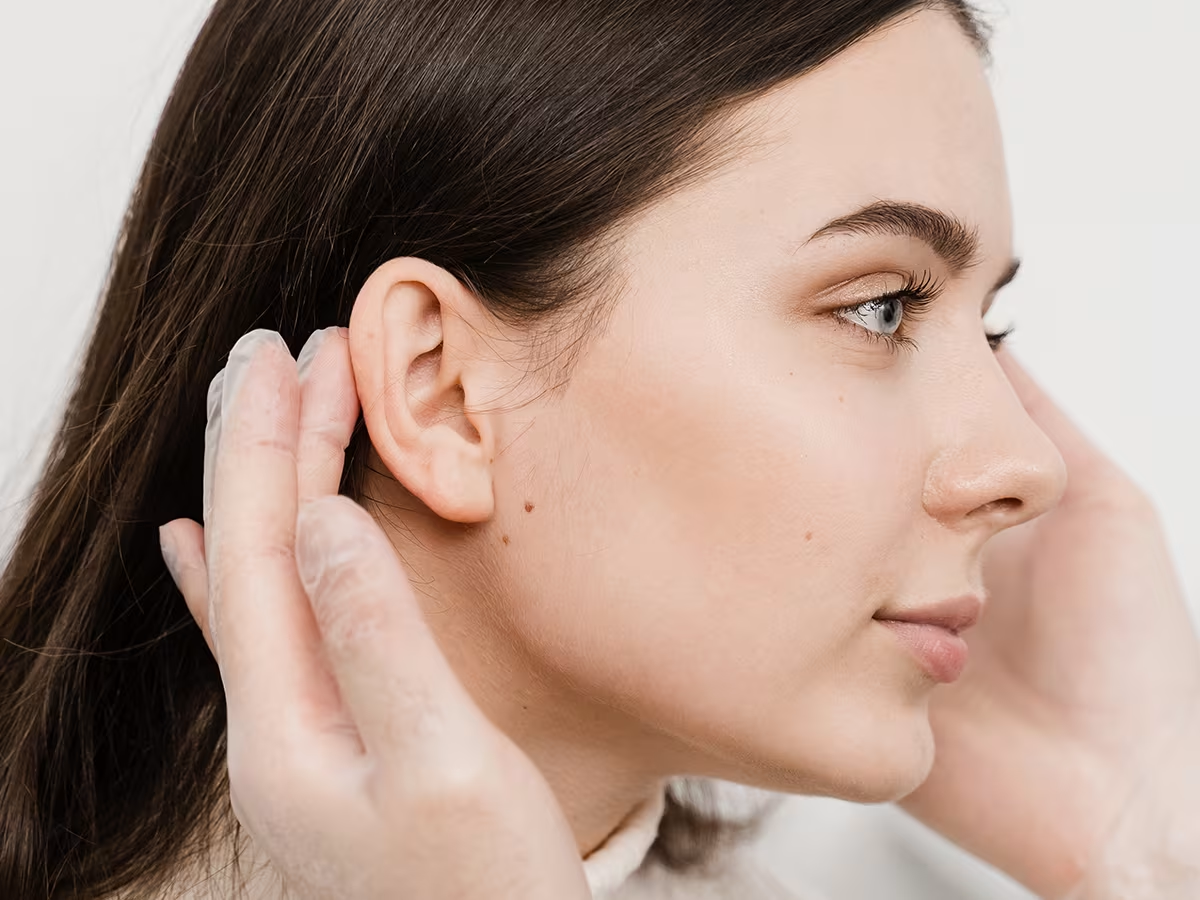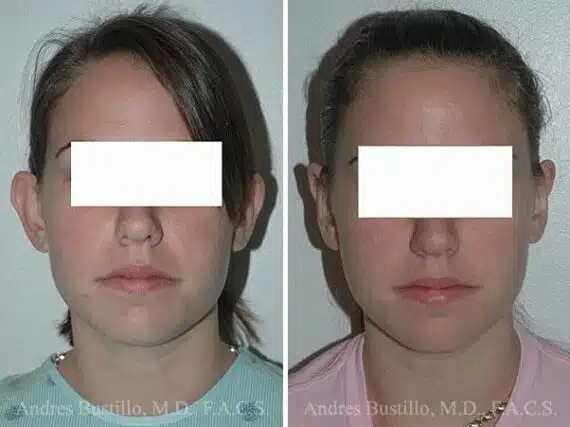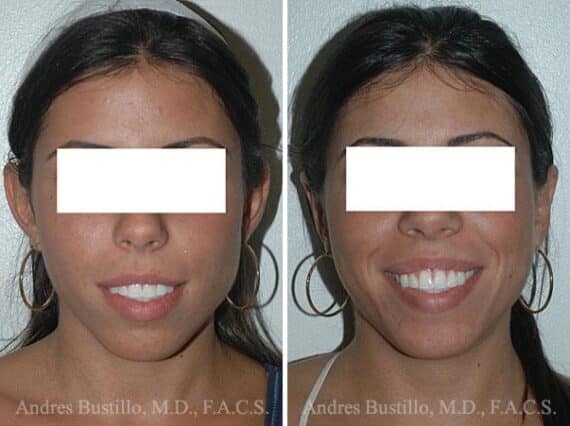Benefits of Otoplasty for Balanced, Harmonious Ears
The Otoplasty Miami procedure, commonly known as ear surgery, is a procedure designed to alter the shape, position, or size of the ears. It offers a solution to those self-conscious about their ears, whether due to their size, shape, or protrusion. This cosmetic surgery can significantly enhance one’s appearance, facial balance, and self-esteem, making it a popular choice for both adults and children seeking facial harmony.

Understanding the Ear Surgery Procedure: What You Need to Know
Otoplasty, or cosmetic ear surgery, is a very common facial plastic surgery procedure. The goal of an otoplasty is to give the ears a more natural shape regarding projection and size while also restoring balance and proportion to the face overall.
The procedure is frequently performed to correct protruding ears, which may first become apparent in the first few years of life. In fact, psychologists have found that the physical appearance of the ears can have a strong impact on the psychological development of children. Occasionally, children may develop only one protruding ear or a floppy ear, commonly called “lop ear.
An otoplasty in Miami can be done on patients as young as four years old, and of course, at any time for adults. Dr. Bustillo customizes his approach for otoplasty surgery based on each patient’s unique anatomy and specific goals for treatment. If you’re unhappy with the size or shape of your ears, otoplasty may be a good choice.

Patient Testimonials: Real Stories, Real Results
Common Causes of Cosmetic Ear Problems
In some cases, a traumatic injury, such as a car wreck or torn earlobe, is the cause of ear deformities. However, many babies are born with large ear lobes, protruding or drooping ears, or even ears with missing cartilage.
While these abnormalities usually don’t affect a person’s hearing, they can still significantly impact their quality of life. For example, patients of all ages with misshapen ears often experience social anxiety, while school-aged children may become more vulnerable to teasing. If you or your child has uniquely shaped ears, an otoplasty, or ear surgery, could be the solution.
Otoplasty Before and After Photos
Each patient is unique and individual results may vary*.
What to Expect During Your Otoplasty Consultation
Dr. Bustillo will meet with the patient and family to listen to their concerns. He will then examine the ears and explain why the patient’s ears are protruding. He will go over the procedure from start to finish so that the patient and family have a clear understanding of the surgical procedure and have appropriate expectations.
The doctor will then review various before and after pictures of Miami otoplasty patients who have undergone successful ear surgery with him. The goal of otoplasty is to bring the ears closer to the head and lessen any asymmetry between them, so as to remove the focus from the ears.

Ideal Candidates for Otoplasty in Miami
About half of the patients who undergo the otoplasty operation are children. Parents are often confused about the timing of otoplasty surgery in children, however.
Ideally, the surgery should be performed between ages five and six. At this age, the ear is fully developed and the child is about to start school. This is important because it is during this time that the child begins to develop self-esteem. It is also the age at which he may be teased at school.
Dr. Bustillo recommends treatment at this age to promote the development of healthy self-esteem during the early years. Adults also commonly undergo otoplasty surgery.
The Otoplasty Procedure
The otoplasty procedure is performed via a small incision behind the ear. If the ear is missing the anti-helical fold, then Dr. Bustillo will place several permanent stitches through the ear cartilage. When these stitches are tied, they create the anti-helical fold and change the shape of the ear.
When the fold is created, the ear will come in towards the head. The anti-helical fold should not be made by cutting any cartilage. This can lead to an ear deformity.
If the conchal bowl is too large, then it is carefully shaved and brought in closer to the head with permanent stitches. In most otoplasty procedures, a combination of both of these procedures is done to bring the ear closer to the head. It takes Dr. Bustillo about one and half hours to perform the otoplasty.
Questions about your procedure?
Schedule a consultation with Dr. Andres Bustillo.
Types of Anesthesia Used in Ear Surgery
The type of anesthesia used for the otoplasty depends on the age of the patient. Dr. Bustillo performs otoplasty on children and teenagers with general anesthesia. The procedure is performed in either Baptist Hospital Ambulatory Center or at Bayside Center with board-certified anesthesiologists (M.D.) Dr. Bustillo performs the otoplasty on adults under local anesthesia with oral sedation at his state-of-the-art surgical suite.

Recovery Process After Ear Surgery
The patient should spend the night of the surgery resting in bed. It is best that the patient keep a liquid diet for the first night. The head should be kept elevated with two pillows.
The majority of patients that undergo an otoplasty procedure with Dr. Bustillo do not have any pain or discomfort. A prescription for pain medicine is given just in case.
Dr. Bustillo will see the patient the following day in the office and remove the bandage. A removable elastic bandage will be placed over the ears. This should be kept on at all times for the first 3 days after the surgery.
From then on, the patient should wear the bandage only at night for the following 7 days. The patient will then be seen 10 days after the surgery to have any of the remaining absorbable stitches removed (the ones that have not been absorbed).
Most patients are able to return to work or school about 6 days after surgery. They should avoid exercise for 3 weeks after surgery.
Potential Risks and Complications of Otoplasty
As with any surgery, there are possible complications. Although rare, bleeding after an otoplasty can occur, especially if the patient took medications that affected coagulation.
If this occurs, the incision is opened, any bleeding is stopped and the dressing is replaced. The wound can become infected.
This is also a rare occurrence, as Dr. Bustillo administers antibiotics before, during, and after the otoplasty. If an infection occurs, stronger antibiotics are given.

Cost of Otoplasty with Dr. Bustillo
The cost of otoplasty can vary based on the patient’s age and the complexity of the procedure. For adults, the cost of otoplasty with Dr. Bustillo starts at $7,500, while for children, it starts at $10,000. These costs include pre-operative visits, anesthesia fees, surgical fees, and post-operative care. Discuss all potential costs during your consultation to understand the financial commitment involved. Financing options may be available for those who qualify.
Why Choose Dr. Bustillo as Your Cosmetic Ear Surgeon?
Dr. Bustillo is known as a facial aesthetics authority in Miami. He is a double board-certified plastic surgeon with over 20 years in practice and understands how to bring out the best in his patients. He is known for offering natural-looking results from both surgical and non-invasive procedures, prompting his patients to come back again and again.
- Castle Connolly Top Doctor for more than 10 years
- American Board of Facial Plastic and Reconstructive Surgery
- American Board of Otolaryngology-Head and Neck Surgery
- Facial Plastic & Reconstructive Surgery Fellowship at The New York University
- Otolaryngology – Head & Neck Surgery Residency at The University of Miami, Jackson Memorial Hospital
- General Surgery Internship at The University of Miami, Jackson Memorial Hospital




